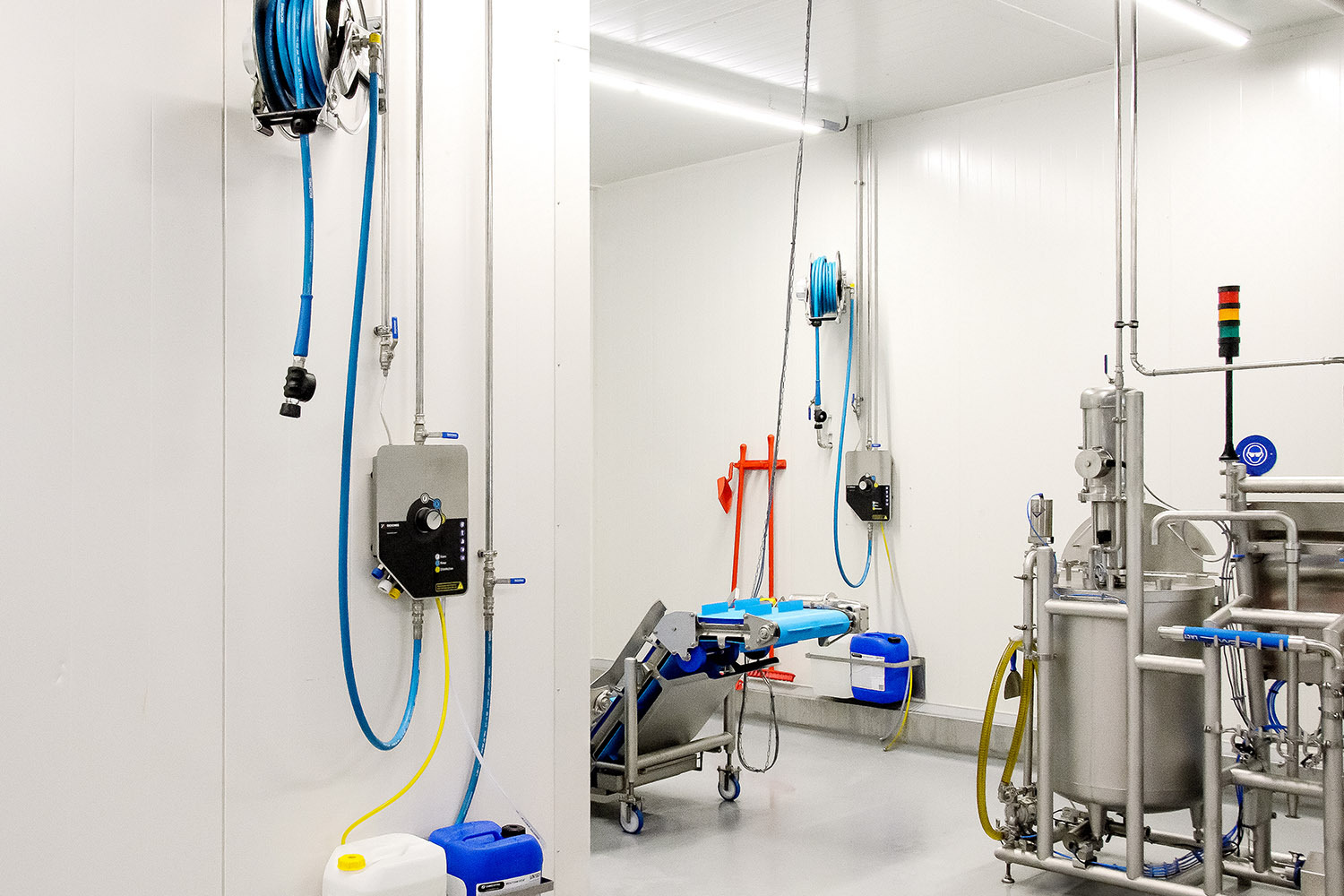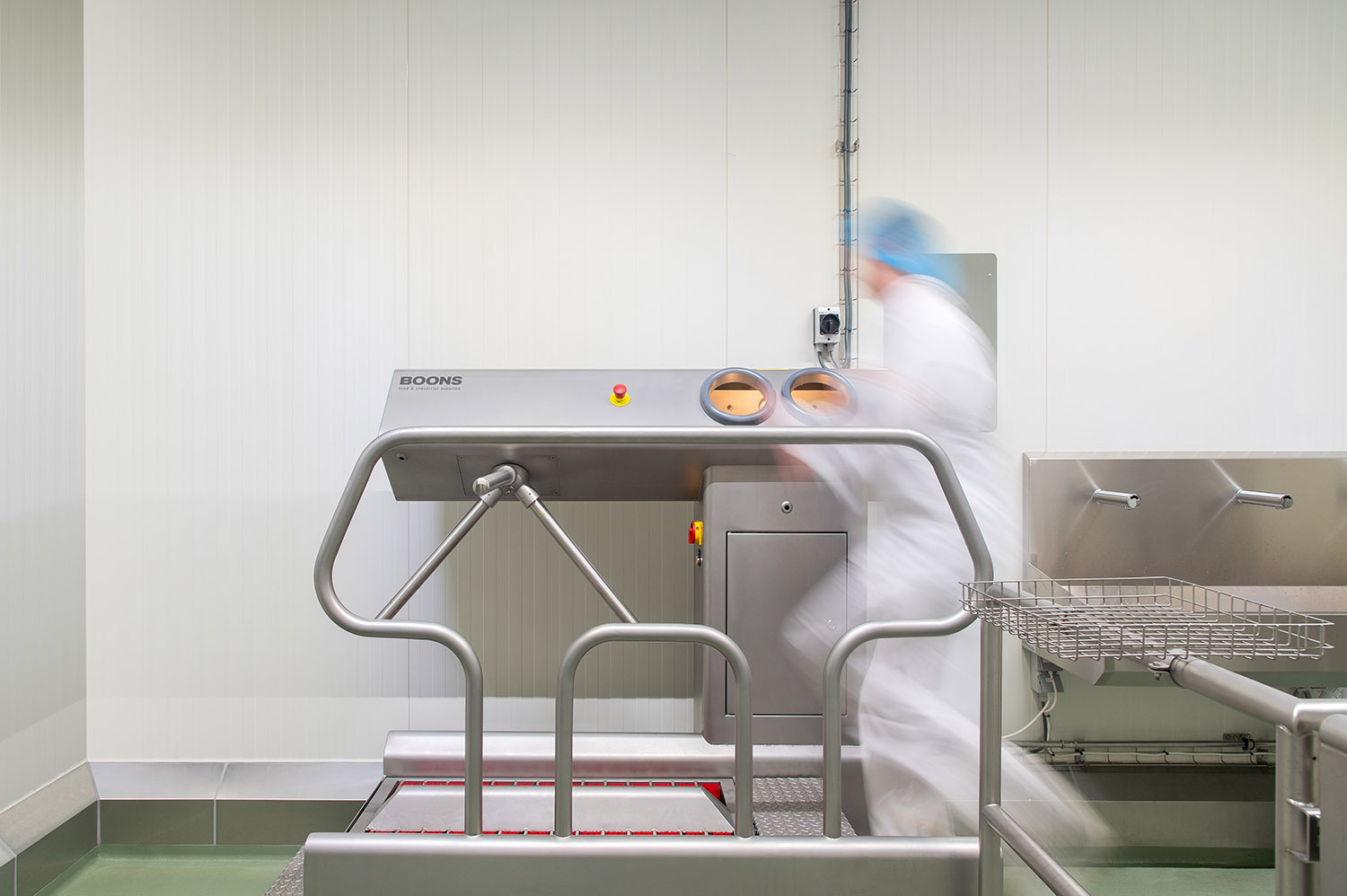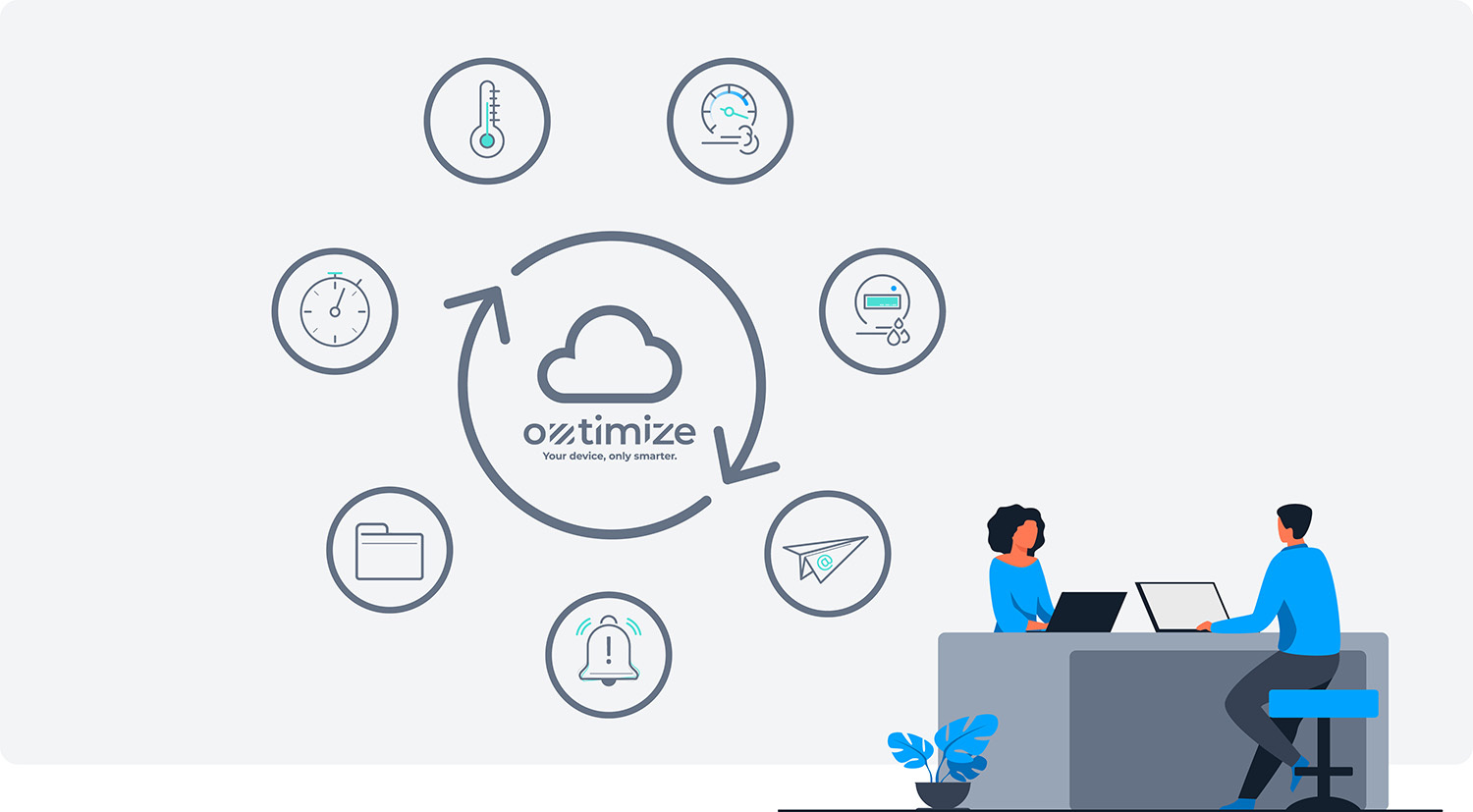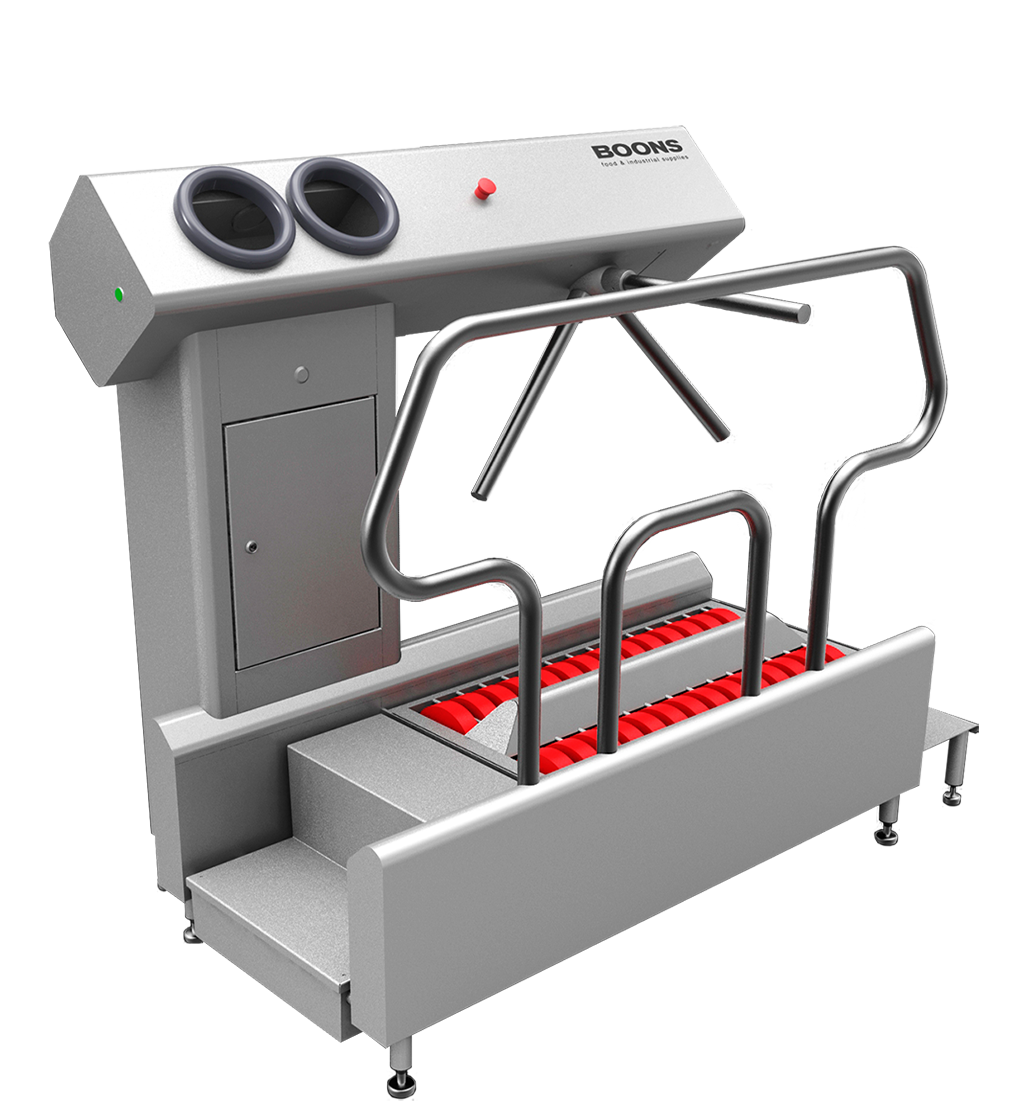Hygiene and cleaning in food packaging sector
- Wednesday 17 April 2024
- By: BOONS FIS
- Category: Foaming and disinfection installations
We regularly talk about the high requirements around hygiene within the food industry in our blogs. Even if a company in the food industry meets all the requirements, there are still risks. Here we think, for example, of food packaging and the material used to do this. If the quality standard of the packaging supplier is lower than usual in the food industry, there is a chance that the food will still be contaminated. Any contamination affects the quality and shelf life of the food product. It is therefore important that the entire chain respects the same quality standards.
Environmental conditions
The environment in which food is processed and packaged is very important. Underpressure can be the cause of unwanted air flows that may contain mould and bacteria. Or moulds and bacteria can develop on the food through condensation. A good climate control system provides monitoring of 3 elements:
- Good temperature monitoring reduces the risk of condensation (absolutely to be avoided during packaging)
- At the ideal humidity level, you avoid condensation (= too high humidity) and static electricity (= too low humidity)
- To avoid dust and bacteria in the packaging, a controlled air supply via overpressure is recommended.

What can we do?
To ensure quality and food safety (of convenience products), the food industry should ensure the following actions:
- Wash the raw materials, especially when they come off the field.
- Wrap the product in suitable packaging materials and under optimal conditions to store the product throughout its shelf life.
- To guarantee the cold chain, monitor the temperature at each stage of the production process.
- Check all raw materials for quality and applicable microbiological standards.
- Strictly follow hygiene processes and quality regulations throughout the production process.
- Use suitable disinfectants in the (washing) water and on surfaces in contact with food.
- In the case of prepared/cooked products, ensure that the cooking time and temperature are sufficient to inactivate the microbiological load of the product.
- Disinfect points where contamination may manifest itself. Also specifically check for the presence of biofilms.
- Minimise cross-contamination throughout the production process.
In the food processing sector in general, listeria is the most common bacterium causing contamination. Risk products are soft cheeses made from raw milk, pre-packaged smoked fish, pre-packaged processed meats and raw animal products. In our earlier blog 'Reducing listeria risk on listeria' we already discussed this in detail.
Packaging materials and conditions vs shelf life
A lot can go wrong during the shelf life of (ready-to-eat) food products. The moment of packaging also involves certain risks regarding the microbiological safety of the food and the preservation of its organoleptic properties (this includes sensory factors such as taste, smell, colour and texture). During the packaging process, e.g. due to improper sealing, there may be a risk of microbial contamination.
The most commonly used material for food packaging is plastic, due to its mechanical strength and low price. The problem, however, is that plastic packaging is often not biodegradable. To be more environmentally friendly, more biodegradable plastic packaging is marketed. In addition, research projects are being developed with the aim of reusing plastic food packaging after they have been properly cleaned and disinfected.
Question of confidence
Hygiene is an essential part of the food packaging sector and is of great importance for ensuring food safety and quality. By following strict protocols, investing in training and embracing technological innovations, companies in this sector can gain consumer trust and have a positive impact on public health. Maintaining high hygiene standards is not only a legal obligation, but also an ethical responsibility to provide consumers with safe and high-quality packaged food.
Hygiene is the key to safety and quality in the food packaging sector
Hygiene plays a crucial role in the food packaging sector, where meticulous care of products is essential to ensure food safety and quality. Consumers rely on the food packaging industry to deliver products in optimal condition.
We offer you here below some measures that must be taken to maintain the highest standards.



01. Food safety as a priority
Food safety is an absolute priority in the food packaging industry. Packaging that comes into direct contact with food must meet strict hygiene standards to prevent contamination.
This includes the use of materials suitable for food contact and regular inspections to ensure they meet the standards.
02. Cleaning procedures and protocols
Implementing strict cleaning procedures and protocols is essential in the food packaging sector. This includes regular cleaning and disinfection of production equipment, packaging lines and facilities. Employees must be trained in proper cleaning techniques and the use of appropriate cleaning agents to maintain a hygienic working environment.
The central and decentralised cleaning systems 'by BOONS FIS' have been developed exactly for this purpose and offer exceptional ease of use for the operators.
03. Personal hygiene
Employees in the food packaging industry play a key role in ensuring hygiene. Compliance with strict, personal hygiene standards, such as wearing appropriate work clothing, hairnets and gloves, is vital.
BOONS FIS is the right partner in realising complete hygiene locks within your production. Regular training on hygiene protocols is necessary to minimise the risk of contamination.


04. Quality control and traceability:
An effective hygiene system also includes strict quality control measures and product traceability.
05. Technological innovations
Modern technologies contribute to maintaining hygiene standards in the food packaging sector. This includes the use of advanced packaging materials with antimicrobial properties and even smart sensors that can monitor package integrity. BOONS FIS offers its own in-cloud monitoring system "Obtimize" to have extensive control over the resultes / performance of the cleaning system.
Conclusion
Hygiene is an integral part of the food packaging sector and is essential for ensuring food safety and quality. By following strict protocols, investing in training and embracing technological innovations, companies in this sector can gain the consumer confidence and have a positive impact on public health.
BOONS FIS is an experienced partner in cleaning systems and personal hygiene in the food sector. Contact our sales team to see together what we can do for your company.
Maintaining high hygiene standards is not only a legal obligation, but also an ethical responsibility to provide consumers with safe and high-quality packaged food.
Products in this message

Hand‑washing sinks with Dyson Airblade
Wash and dry hands over the sink. You can wash and dry your hands without touching the tab....
Obtimize
The laws and regulations on cleaning in the food processing industry have been extended and...
URK hygiene station
The URK is a robust hygiene station that was designed for the controlled passage of employees...
Station
CS‑FD‑1‑R
This CS centralised satellite is standard equipped with a stop and 3 positions: foaming (F),...

Station
DSW‑FD‑1‑R
The mechanically controlled DSW FD-1-R is a simple to operate decentralised cleaning station...

